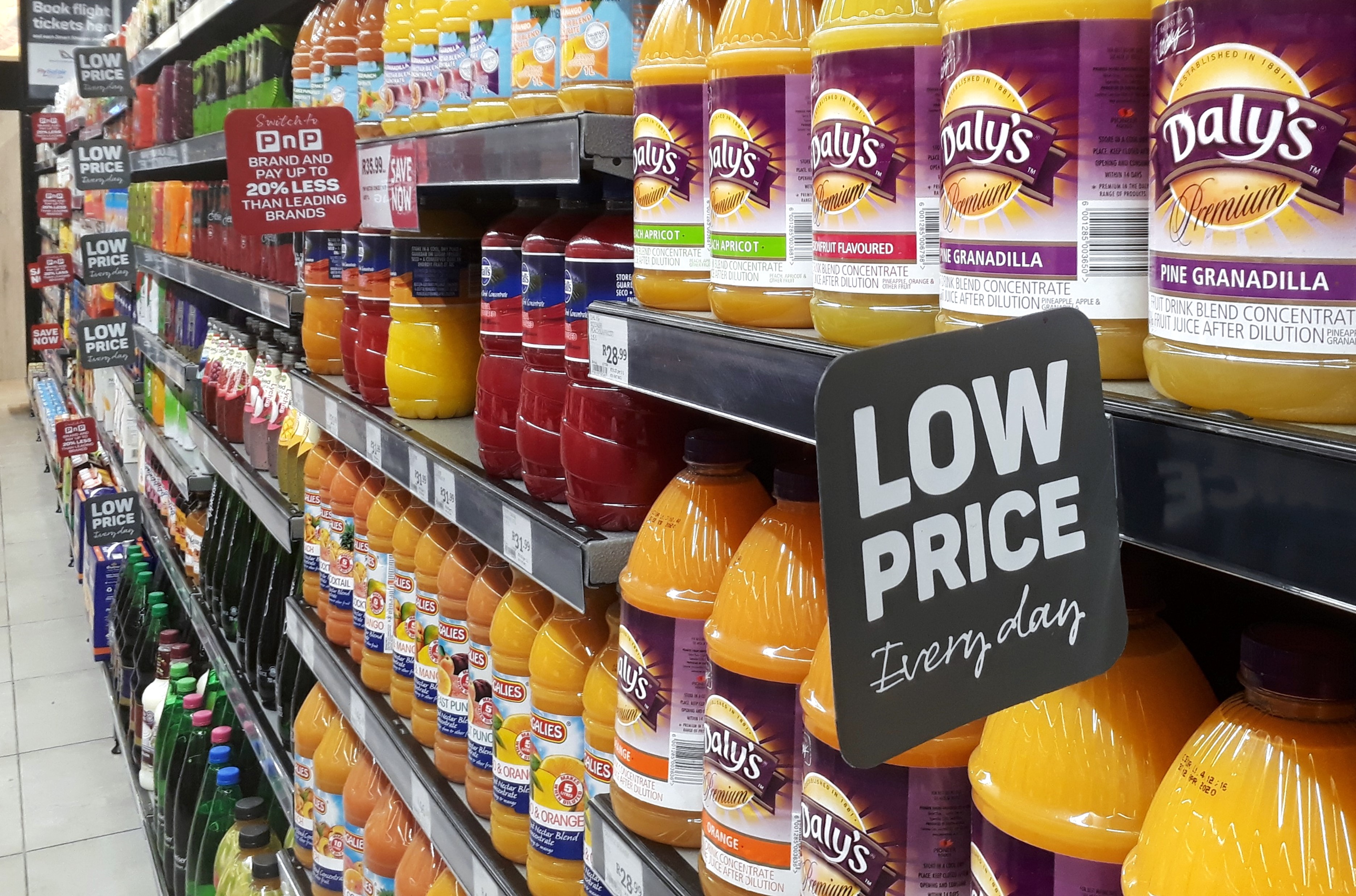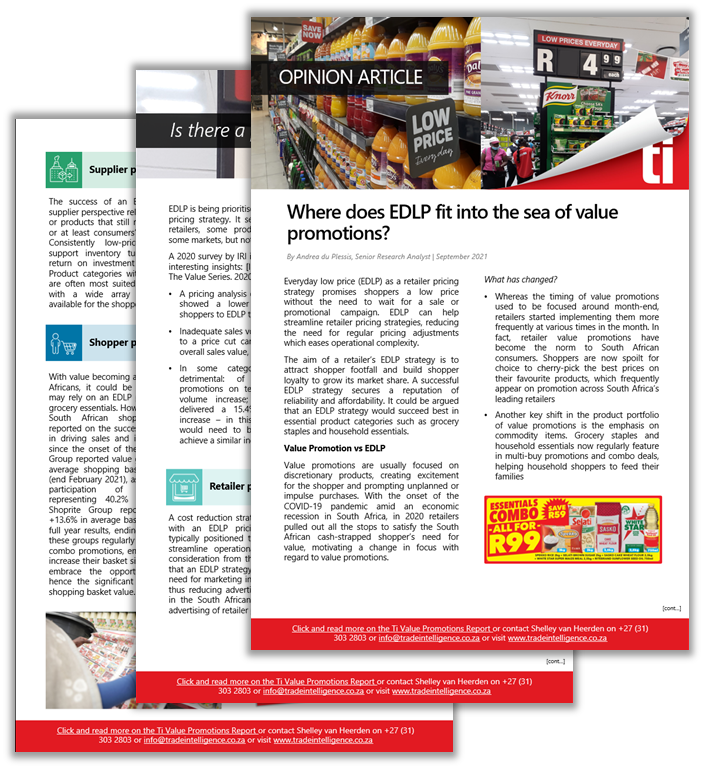Everyday low price (EDLP) as a retailer pricing strategy promises shoppers a low price without the need to wait for a sale or promotional campaign. EDLP can help streamline retailer pricing strategies, reducing the need for regular pricing adjustments which eases operational complexity.
The aim of a retailer’s EDLP strategy is to attract shopper footfall and build shopper loyalty to grow its market share. A successful EDLP strategy secures a reputation of reliability and affordability. It could be argued that an EDLP strategy would succeed best in essential product categories such as grocery staples and household essentials.
Value Promotion vs EDLP
Value promotions are usually focused on discretionary products, creating excitement for the shopper and prompting unplanned or impulse purchases. With the onset of the COVID-19 pandemic amid an economic recession in South Africa, in 2020 retailers pulled out all the stops to satisfy the South African cash-strapped shopper’s need for value, motivating a change in focus with regard to value promotions.
What has changed?
 Whereas the timing of value promotions used to be focused around month-end, retailers started implementing them more frequently at various times in the month. In fact, retailer value promotions have become the norm to South African consumers. Shoppers are now spoilt for choice to cherry-pick the best prices on their favourite products, which frequently appear on promotion across South Africa’s leading retailers
Whereas the timing of value promotions used to be focused around month-end, retailers started implementing them more frequently at various times in the month. In fact, retailer value promotions have become the norm to South African consumers. Shoppers are now spoilt for choice to cherry-pick the best prices on their favourite products, which frequently appear on promotion across South Africa’s leading retailers - Another key shift in the product portfolio of value promotions is the emphasis on commodity items. Grocery staples and household essentials now regularly feature in multi-buy promotions and combo deals, helping household shoppers to feed their families
Is there a place for EDLP?
EDLP is being prioritised by many retailers as a pricing strategy. It seems to work for some retailers, some product categories and in some markets, but not all.
A 2020 survey by IRI in the UK revealed some interesting insights: [IRI: The FMCG In-Crowd: The Value Series. 2020]
- A pricing analysis of nearly 600 categories showed a lower response among UK shoppers to EDLP than to promotions
- Inadequate sales volume growth in relation to a price cut can result in a decline in overall sales value, revenue and profit
- In some categories, EDLP may be detrimental: of categories surveyed, promotions on tea resulted in a 30.7% volume increase; promotions on beer delivered a 15.4% incremental volume increase – in this case, everyday prices would need to be reduced by 16% to achieve a similar increase.

A cost reduction strategy goes hand in hand with an EDLP pricing strategy, which is typically positioned to drive efficiencies and streamline operational costs. Another cost consideration from the retailer perspective is that an EDLP strategy technically reduces the need for marketing in support of promotions, thus reducing advertising spend. In question in the South African context is: who funds advertising of retailer promotions?
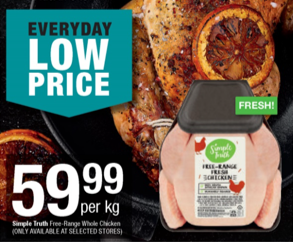 South African retailers appear to approach pricing with a combined focus on promotions and EDLP across different product categories. Retailers, including Game, Makro and Dis-Chem, often refer to “everyday low price” as part of their pricing strategy, while Clicks refers to its “competitive everyday price” approach. The Shoprite Group, renowned as the price leader in South African retail, rarely refers to EDLP, however Checkers recently started labelling its pricing on fresh chicken as EDLP on advertising leaflets. This may relate to Woolworths’ recent focus on price investment, where fresh chicken was highlighted as a key category. Even though Woolworths was not able to position itself as the price leader in fresh chicken through its pricing adjustments, it is currently the ‘go-to’ retailer for best pricing on items such as toilet paper.
South African retailers appear to approach pricing with a combined focus on promotions and EDLP across different product categories. Retailers, including Game, Makro and Dis-Chem, often refer to “everyday low price” as part of their pricing strategy, while Clicks refers to its “competitive everyday price” approach. The Shoprite Group, renowned as the price leader in South African retail, rarely refers to EDLP, however Checkers recently started labelling its pricing on fresh chicken as EDLP on advertising leaflets. This may relate to Woolworths’ recent focus on price investment, where fresh chicken was highlighted as a key category. Even though Woolworths was not able to position itself as the price leader in fresh chicken through its pricing adjustments, it is currently the ‘go-to’ retailer for best pricing on items such as toilet paper.

The success of an EDLP strategy from a supplier perspective relies on mass production or products that still meet quality standards, or at least consumers’ perception of quality. Consistently low-priced quality products support inventory turns, ans thus overall return on investment despite low margins. Product categories with high price elasticity are often most suited for an EDLP strategy, with a wide array of substitutes being available for the shopper.

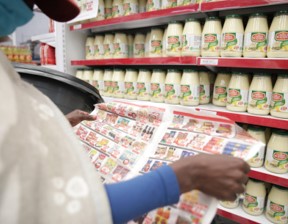 With value becoming a necessity for all South Africans, it could be argued that shoppers may rely on an EDLP pricing model for their grocery essentials. How does that relate to the South African shopper? Retailers have reported on the success of value promotions in driving sales and increased basket value since the onset of the pandemic. The Clicks Group reported value growth of +11% on an average shopping basket at their half year (end February 2021), as well as an increase in participation of value promotions representing 40.2% of retail sales. The Shoprite Group reported an increase of +13.6% in average basket value at its FY2021 full year results, ending 4 July 2021. Both of these groups regularly feature multi-buy and combo promotions, encouraging shoppers to increase their basket size. Shoppers appear to embrace the opportunity to pantry-load, hence the significant reported increases in shopping basket value.
With value becoming a necessity for all South Africans, it could be argued that shoppers may rely on an EDLP pricing model for their grocery essentials. How does that relate to the South African shopper? Retailers have reported on the success of value promotions in driving sales and increased basket value since the onset of the pandemic. The Clicks Group reported value growth of +11% on an average shopping basket at their half year (end February 2021), as well as an increase in participation of value promotions representing 40.2% of retail sales. The Shoprite Group reported an increase of +13.6% in average basket value at its FY2021 full year results, ending 4 July 2021. Both of these groups regularly feature multi-buy and combo promotions, encouraging shoppers to increase their basket size. Shoppers appear to embrace the opportunity to pantry-load, hence the significant reported increases in shopping basket value.
Did you know?
68% of South African household shoppers use retailer broadsheets to compare the prices of their favourite products across retailers. 60.1% of shoppers plan their shopping around these retailer broadsheet adverts. - Publisher Audience Measure Survey (PAMS) 2019
Some further shopper perspectives:
Are shoppers loyal to brands and retailers?
- Brand switching: Since the onset of the pandemic, 69% of shoppers switched to lower-cost alternatives over their favourite brands – Ask Africa, October 2020
- Private label: Participation of private label in South African shopping baskets have increased to 24.3% from 22.8% reported during 2019 – Nielsen IQ 2021
- Retailer switching: 56% of South African shoppers are willing to “switch retailers at any time for cheaper prices” – ViacomCBS 2021
Summing up then, value is no longer a priority just for low-income groups – it has become a necessity for all South African shoppers. As a result, retailers have answered shoppers’ need for value with frequent value promotions and shoppers have responded by prioritising promotional items in their shopping baskets. As long as retailers provide shoppers access to frequent promotions, the likelihood of EDLP dominating as a pricing strategy seems rather slim.
After all, who drives the agenda in South Africa retail? The shopper of course!
Download the PDF document here
For a detailed view into the changing dynamics in value promotions and the shifts in shopper behaviour within a disrupted retail landscape, subscribe to the Ti Value Promotions Report and attend the webinar on 30 September 2021.
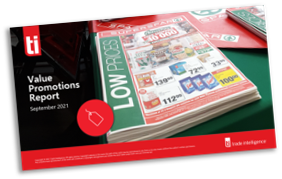 Click here for more information
Click here for more information


